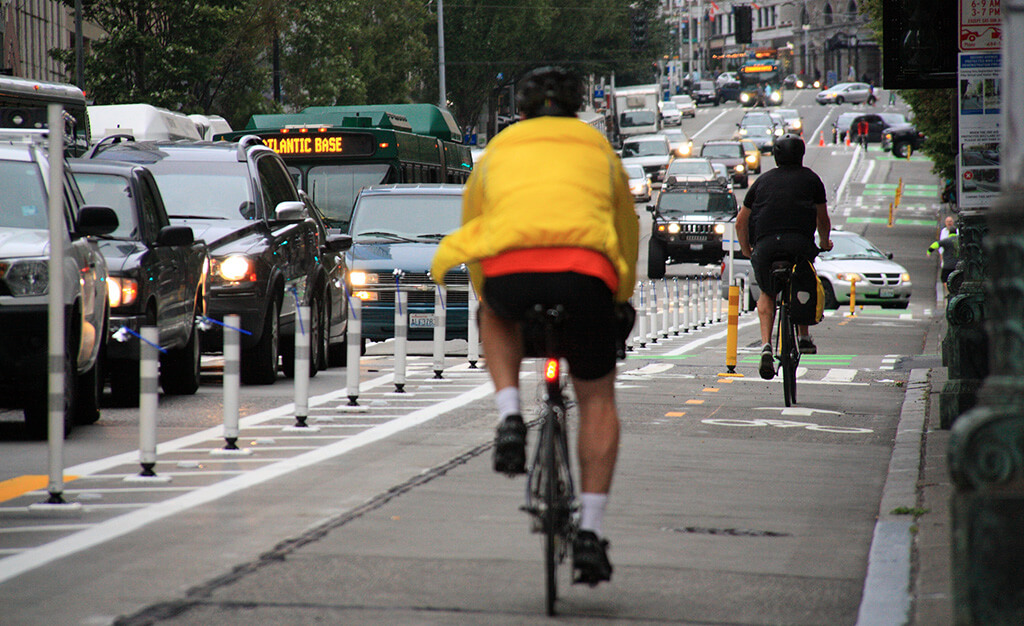Autumn Gear Guide
Find inspiration in our Gear Guide that will keep you out on your bike through wind or rain.
Download NowThe route you take to bike to work likely won’t be the same you’d take in a car.
Half of the fun of bike commuting is that it relieves the burden of stress caused by rush hour traffic. Cycling to work is a chance to relax, engage with your surroundings, and clear your head on the way to and from work. For that reason, it’s important to look for a route that enables you to take advantage of those benefits.

Photo by SDOT Photos
The route you take to bike to work likely won’t be the same you’d take in a car. That busy four-lane artery you’ve been driving on for years which funnels traffic quickly into the city? Try riding down the minimal shoulder of that thing on your first day and you’ll probably never get on your bike again.
Most municipalities have route maps of their dedicated cycle paths available online or at city hall. If you can’t find on through the city, speak to your local bike shop or bike advocacy organization to see what materials they provide about route planning.
Try to plan the majority of your route on dedicated bike infrastructure, ideally protected bike lanes. In order of safety and comfort, off-street bike paths and protected bike lanes should be your first choice. After those, look for well-used bike lanes on traffic-calmed streets. If you suffer from a real lack of safe cycling infrastructure, try to plan as much as your ride as possible on quiet back streets where motorists tend to drive more slowly.
If your commute is particularly long or you’re not comfortable riding the whole way, you can integrate public transit into your ride. Check with your local transit system to learn about brining bikes on board, most buses and an increasing number of commuter rails enable passengers to bring bikes. If you can’t bring your bike, you could always lock it up at the station and pick it up on the way home.
It’s a good idea to test your route out ahead of time on a day off. Make sure your pace and allotted time is suitable for the route you planned, so you can make any needed adjustments before your next workday.
Find inspiration in our Gear Guide that will keep you out on your bike through wind or rain.
Download Now
I recommend the maplets app. It has a database of hundreds of city maps, including bike maps. Often bike shops don’t have the hardcopy maps in stock, but you can get the same map on maplets. One thing I don’t recommend is Google maps’ bike directions. Oftentimes google will recommend busy roads when there are nice quiet streets nearby.
If you are not easily intimidated, that grid-locked street that you would avoid at all costs when driving a car might be a good choice when riding a bike in rush hour. You really have to keep your head up but filtering between (essentially) stopped cars could be the fastest & most direct way between where you are now & where you want to end up. Just look at cyclists on streets in Manhattan or Sao Paulo, or Mexico City. I have done this more than a few times in Toronto and am still alive to talk about it. Like other biking strategies, it works better the more cyclists are doing it.
Comments are closed.